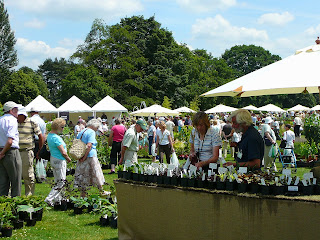
The venue was King Henry's Walk Garden (left), a community garden in the Mildmay ward of Islington, opened in 2007. Created on a patch of derelict land, it's primarily a garden for people who don't have one of their own, with 76 organic growing plots and planters (below) for the use of local residents and communal garden areas for recreation. (It opens to the public at weekends.)
 There's also an area of protected woodland (once the site of an old factory) and a resource building where activities such as our meeting are held. Despite the cold grey weather, the garden was an inspiration. Volunteers were carrying out regular maintenance, and it was heartening to see how many plants were sending up new shoots, despite the recent blanket of snow.
There's also an area of protected woodland (once the site of an old factory) and a resource building where activities such as our meeting are held. Despite the cold grey weather, the garden was an inspiration. Volunteers were carrying out regular maintenance, and it was heartening to see how many plants were sending up new shoots, despite the recent blanket of snow.For more about the project see http://www.khwgarden.org.uk/















































